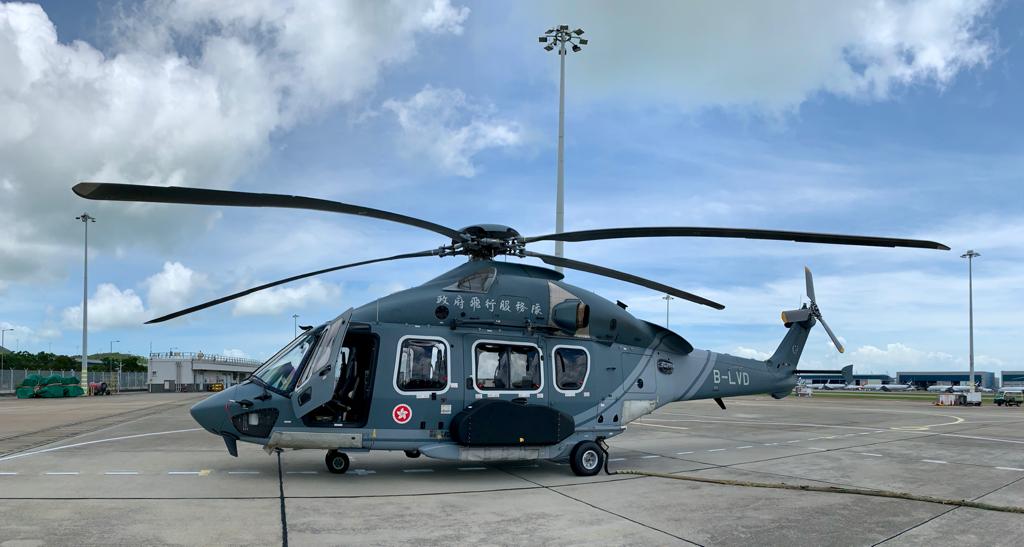Radiological Survey
To enhance the spatial coverage of radiation monitoring over remote areas as well as over the sea, a Radiological Survey Vehicle is employed to conduct surveys on the ground while an Aerial Radiation Monitoring System on board a helicopter is used to conduct aerial surveys over Hong Kong and the adjacent waters.
Aerial Radiation Monitoring System (ARMS)
The ARMS consists of a system control unit and two sets of sodium iodide type gamma ray detectors, one for detecting and tracking of radioactive plume in the atmosphere and the other for monitoring radioactive materials deposited on the ground.

Diagram of Aerial Radiation Monitoring System (ARMS)

Sodium Iodide (NaI) detectors of the ARMS
When carrying out an aerial survey, the ARMS detectors are installed inside a black pod attached to the exterior of the “Airbus H175” Cheetah helicopter of Government Flying Service. Staff of the Observatory will operate the ARMS on board the helicopter.

“Airbus H175” Cheetah helicopter

The ARMS detectors are installed inside a black pod attached to the exterior of the helicopter

Staff of the Observatory operates the system on board the helicopter
Special features of the ARMS are high sensitivity, analysis and display of data in real-time, as well as accurate positioning using GPS technology. The results of routine aerial survey are published in the Observatory's technical reports.

Result of routine aerial survey
An example of measurement results (in counts per second) at 600 metres above sea level measured by the ARMS is shown below. Measurement results at different locations are related to the radioactivity at the location and the height of the helicopter above the ground surface.

Example of measurement results
Radiological Survey Vehicle
The Radiological Survey Vehicle is used to carry out routine and emergency radiological surveys and to collect samples in Hong Kong.
The vehicle is equipped with various sampling and radiation measurement equipment. It regularly visits selected locations in Hong Kong to collect radiation data. During nuclear emergencies, the vehicle will be employed to conduct radiological surveys at sites along selected survey routes in Hong Kong.

Radiological Survey Vehicle

Survey Vehicle Inner Compartment